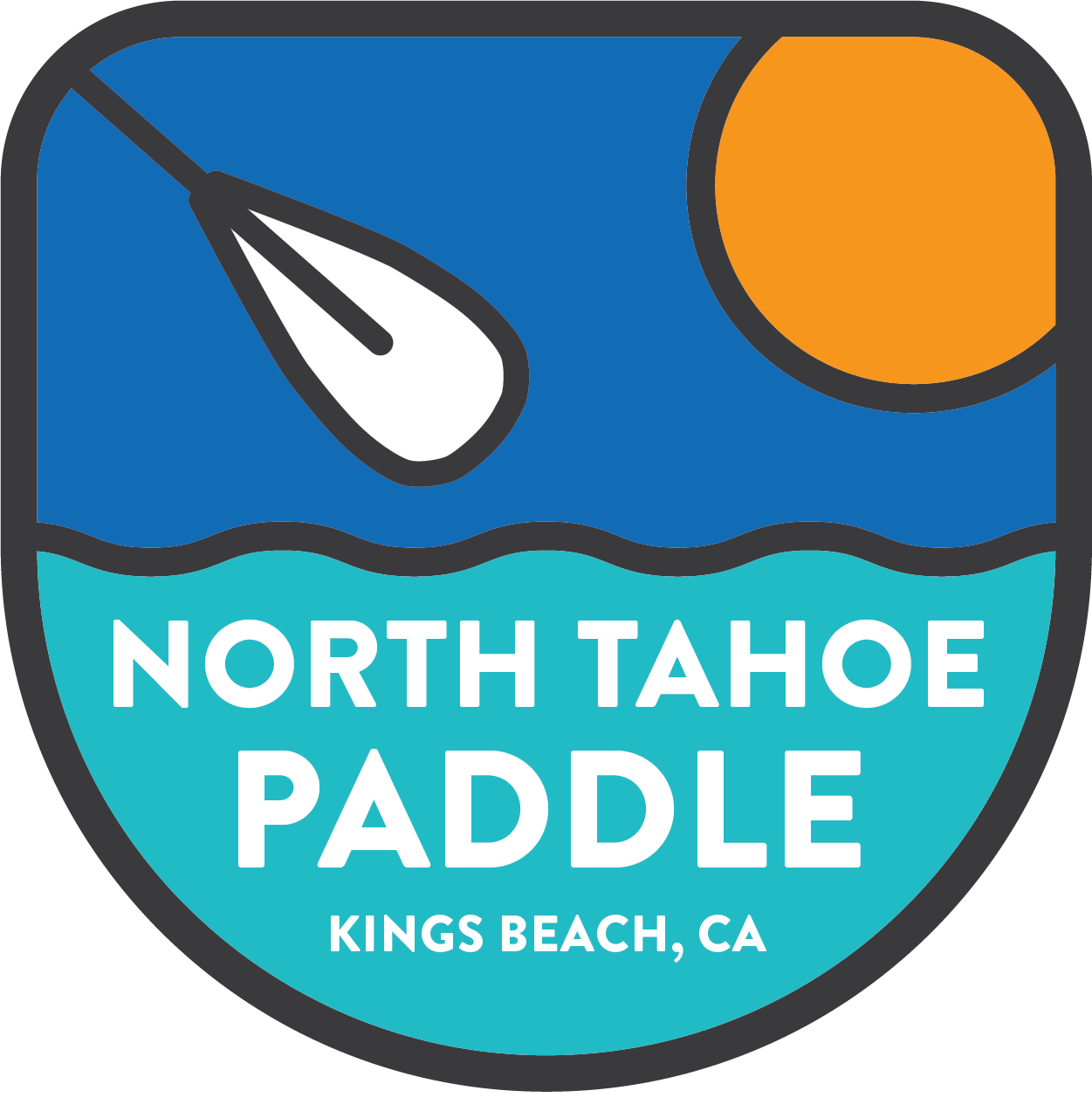Lake Tahoe Information & FAQs
Have questions about Lake Tahoe or just looking for more information about the area? Read through our Lake Tahoe FAQs to learn about Lake Tahoe’s location, size, elevation, water temperature, swimming conditions, outdoor activities, and more.
Where is Lake Tahoe?
Lake Tahoe is located along the border of California and Nevada, nestled high in the Sierra Nevada mountain range. By car, it’s approximately 200 miles northeast of San Francisco, 100 miles northeast of Sacramento, and just 50 miles southwest of Reno, Nevada. The surrounding counties include Placer and El Dorado in California, and Washoe County, Carson City, and Douglas County in Nevada. The lake sits at the heart of the Lake Tahoe Basin, offering stunning alpine views in every direction.
What is there to do in Lake Tahoe?
Lake Tahoe is one of the most popular outdoor recreation destinations in the United States, with activities available year-round. During the summer months, visitors enjoy kayaking, stand-up paddleboarding, swimming, boating, parasailing, jet skiing, rafting, and fishing. Land-based adventures include hiking and mountain biking on hundreds of scenic trails, as well as golfing and disc golf. In winter, Lake Tahoe transforms into a snow-covered paradise, home to twelve major ski resorts offering downhill skiing, snowboarding, snowshoeing, tubing, and snowmobiling. Beyond outdoor activities, Lake Tahoe is known for its casinos, live music venues, restaurants, craft breweries, and après-ski nightlife—making it a top destination for both adventure and entertainment.
How deep is Lake Tahoe?
Lake Tahoe has a maximum depth of 1,645 feet, making it the second-deepest lake in the United States (after Crater Lake in Oregon, at 1,949 feet). Its average depth is about 1,000 feet.
This immense depth contributes to the lake’s famously clear water and rich blue color, which you’ll notice immediately upon arrival.
How big is Lake Tahoe?
Lake Tahoe is approximately 22 miles long and 12 miles wide, with a surface area of 191 square miles. The lake holds over 37 trillion gallons of water—enough to cover the entire state of California with 14 inches of water. It’s the largest alpine lake in North America by volume and the second-largest by surface area, after Lake Pend Oreille in Idaho.
Can you swim in Lake Tahoe? And how cold is Lake Tahoe?
Yes, swimming in Lake Tahoe is both possible and popular—especially during the warmer months. While the lake’s deep water remains a steady 39°F (4°C) year-round, the shallow shoreline areas can warm up to a refreshing 68°–70°F (20°–21°C) in July, August, and early September. These warmer temperatures make swimming, wading, kayaking, and paddleboarding very enjoyable on hot summer days. In contrast, winter water temperatures typically drop into the low 40s°F. Swimming during colder months is not recommended due to the risks of cold water shock, hypothermia, and impaired muscle function, even for experienced swimmers.
How long does it take to drive around Lake Tahoe?
The full loop around Lake Tahoe is about 72 miles and takes approximately three hours to complete with minimal stops and normal traffic conditions. That said, most visitors make a day of it—stopping for photos, food, and scenic hikes. Some popular stops along the drive include:
Sand Harbor, known for its turquoise water and giant boulders
Emerald Bay, with elevated views and the iconic Fannette Island
Incline Village and Kings Beach, located on the North Shore
South Lake Tahoe, offering casinos, nightlife, and dining
Tahoe City, a laid-back mountain town with lakefront charm.
What is the elevation of Lake Tahoe?
Lake Tahoe’s surface elevation is 6,225 feet (1,897 meters) above sea level. Visitors not accustomed to high altitudes may experience mild symptoms like shortness of breath or fatigue, especially during physical activity. Staying hydrated can help ease the transition.
How was Lake Tahoe formed?
Lake Tahoe was formed over the course of millions of years through a combination of geological faulting, volcanic activity, and glacial shaping. About 25 million years ago, faulting between the Sierra Nevada and Carson Ranges caused the land between them to drop, forming the Lake Tahoe Basin. Later, volcanic eruptions from Mt. Pluto on the North Shore sent lava flows into the basin, blocking its only natural outlet and trapping water. During the Ice Age, glaciers carved out many of the surrounding valleys and peaks, leaving behind the U-shaped canyons, dramatic ridgelines, and striking granite features we see today. Eventually, the lake found its current outflow through the Truckee River in Tahoe City.
Are there sharks in Lake Tahoe?
No, Lake Tahoe is a freshwater lake and is completely landlocked. There are no sharks or saltwater species in Lake Tahoe.
The lake is home to a variety of freshwater fish species, including rainbow trout, lake trout (mackinaw), and kokanee salmon.
When is the best time to visit Lake Tahoe?
Best for beach days and water sports: July through September
Best for snow activities: December through March
Best for fewer crowds and mild weather: Late May–early June and late September–early October
Each season brings a different side of Lake Tahoe, whether it’s alpine wildflowers, autumn colors, fresh powder, or perfect paddling conditions.
